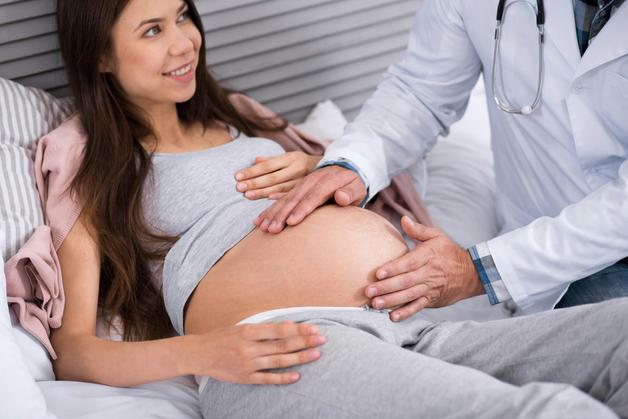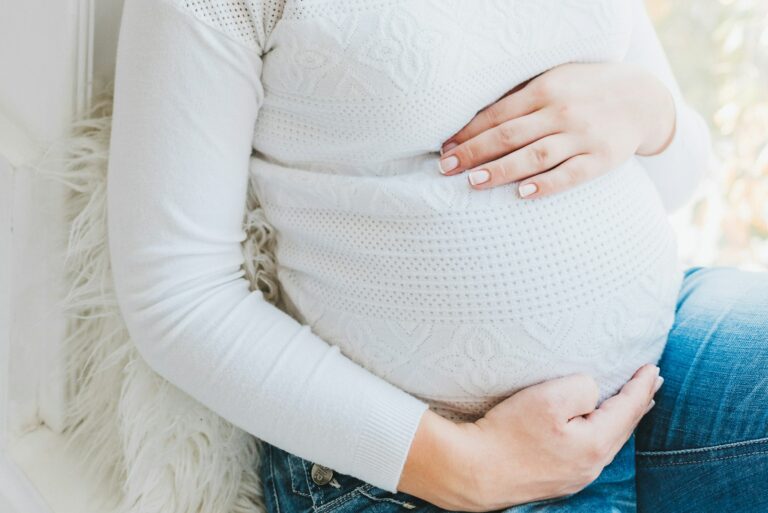Welcoming a new life into the world is filled with anticipation, joy, and, quite naturally, anxiety about unseen risks—a reality every expectant parent knows well. Among the quieter but most significant health concerns sits listeriosis pregnancy. This condition, triggered by the stealthy bacterium Listeria monocytogenes, can transform a routine craving or a seemingly innocent bite into a source of worry for your growing family. You might wonder—why pay attention to a rare infection when so much is uncertain already? Yet, the consequences for babies can be life-altering, even when maternal symptoms slip by almost unnoticed. Here, step by step, the aim is to untangle confusion about listeriosis pregnancy: from how this bacterium sneaks into some foods, to ways your own body’s amazing adaptation during pregnancy shifts your susceptibility, to warning signs that demand attention, and real-world strategies to help you feel ready rather than alarmed.
Understanding listeriosis pregnancy: an invisible adversary
Pregnancy draws you into a new world—a world where your immune system becomes more tolerant, acting protectively for your developing baby, but quietly increasing your vulnerability to certain infections. Listeriosis pregnancy emerges from this unique change. The culprit, Listeria monocytogenes, earns extra attention for its resilience. While you might expect bacteria to vanish in the cold, this one defies logic: it survives, and multiplies, even in refrigerator temperatures. More unnerving, Listeria doesn’t betray itself with spoiled smells, odd textures, or off-putting colors. It simply blends in—lying in wait, particularly in high-moisture foods like unpasteurized cheese, soft ripened varieties, deli meats, pâté, or raw seafood.
What elevates listeriosis pregnancy to a significant concern? The answer rests on the placenta. This remarkable organ nourishes your baby, but sadly, it’s also a vulnerable gateway. Listeria crosses the placental barrier, exposing the fetus to direct harm. Scientific studies show that expecting mothers face an infection risk 13 to 18 times higher than others. Why does this spike happen? Immune adaptation in pregnancy explains part of it, along with higher exposure to risk-prone foods.
Incidence rates remain low—roughly 1 to 10 cases per 100,000 pregnancies in developed countries. Yet, the potential for severe outcomes, such as miscarriage or preterm birth, transforms listeriosis pregnancy from a scientific curiosity to a priority for parental vigilance. Around a fifth to a third of fetal or newborn cases can end in mortality, or long-term complications, underscoring the silent seriousness of the bacterium.
How infection occurs: foods and factors
Not all foods pose equal danger, but the list for families to remember is refreshingly straightforward. What sits on the high-alert list?
- Raw milk and unpasteurized dairy products—including some feta, Brie, Camembert, blue cheeses, queso fresco—are common vehicles.
- Ready-to-eat meats: deli slices, cold cuts, hot dogs, and refrigerated pâtés, unless cooked steaming hot just before eating.
- Smoked and cured seafood (if not canned or properly heated).
- Unwashed or contaminated raw fruits and vegetables, notably soft-skinned melons or sprouts.
Perhaps more unexpectedly, even soil and garden produce can harbor Listeria, making good hand and surface hygiene a surprisingly potent form of protection.
Pregnant physiology adds its own twist: the gentle downshift in cell-mediated immunity—the kind of defense your body usually uses to sweep intruders from the lymph system—creates an opening for the bacterium. For families living with additional health conditions, or taking immunosuppressive medication, the risk further increases.
Symptoms of listeriosis pregnancy: what to watch for
Nothing captures the sneaky character of listeriosis pregnancy like its symptoms. Early signs can be so bland—a low-grade fever, unexplained fatigue, chills, mild muscle aches, perhaps a touch of nausea or diarrhea. Many mothers notice nothing at all. Others might chalk their feelings up to a rough night’s sleep or the general intensity of late pregnancy. Sometimes, the first inkling isn’t discomfort in the mother at all, but a complication in the baby.
In rare and serious cases, the infection can progress to more alarming health concerns: septicemia (a bloodstream infection) or meningitis (inflammation of the layers around the brain and spinal cord), particularly if there’s a pre-existing vulnerability.
What’s the impact on the developing baby? If Listeria monocytogenes accesses the placenta, a range of complications can arise—including miscarriage or embryonic loss (most common in the first trimester), stillbirth, preterm labor, or severe neonatal infection. The first few days after birth carry particular risk for early-onset newborn illness marked by fever, respiratory distress, or lethargy. Later, in the weeks following delivery, the focus shifts to possible central nervous system infection, with warning signs such as poor feeding, irritability, or even seizures.
Trimester-specific risks
- First trimester: Miscarriage or early embryonic loss stands out as a major concern.
- Second trimester: Preterm labor, placental infection, or fetal loss may occur.
- Third trimester: Preterm delivery, low birth weight, and severe neonatal listeriosis become more likely, especially if infection is unrecognized.
Diagnosis and immediate care: what happens if listeriosis pregnancy is suspected?
Parents, understandably, may hesitate—should a low fever or muscle ache really prompt an urgent visit? In the case of listeriosis pregnancy, timely action makes a measurable difference. The bacterium’s incubation period can stretch for weeks, so symptoms may seem disconnected from the actual moment of exposure. That’s why doctors recommend a low threshold for testing, particularly if a pregnant woman presents with fever, unexplained tiredness, or gastrointestinal upset and has eaten higher-risk foods recently.
Diagnosis hinges on laboratory analysis: blood culture stands out as the gold standard, allowing direct detection of the bacterium. In particular situations, such as a newborn showing symptoms or after pregnancy loss, additional samples (amniotic fluid, placental tissue, or the newborn’s blood) provide further clarity.
Treatment, once initiated, involves powerful antibiotics administered by intravenous drip—specifically ampicillin or amoxicillin, with gentamicin added in more severe cases. Alternatives exist for those with allergies (such as trimethoprim-sulfamethoxazole), but they demand careful monitoring. Hospitalization becomes key: doctors will monitor the mother’s health and fetus via regular ultrasounds and biological markers, sometimes choosing preemptive antibiotics if the risk justifies it.
The importance? Early initiation of therapy can dramatically reduce the chances of fetal or neonatal complications, offering parents a proven roadmap to a more positive outcome.
Prevention as peace of mind: real-world steps for safer pregnancies
The best preventive measures are, at heart, daily habits—no grand gestures required. With listeriosis pregnancy, small adaptations yield significant protection:
- Steer clear of unpasteurized cheeses and always check food labels; pure pasteurization is a reliable shield.
- Skip cold deli meats, cold smoked fish, and raw shellfish, unless cooked until steaming hot.
- Wash all fresh produce thoroughly under running water (even if premade or prewashed), especially those grown close to the soil.
- Maintain fridge temperatures below 40°F (4°C), and reheat leftovers above 158°F (70°C).
- Clean all surfaces, utensils, and your own hands with diligence—tiny lapses can allow contamination.
- Consider wearing gloves while gardening; Listeria can dwell in soil.
- Limit handling of cat litter, since this may also expose you to other pathogens risky in pregnancy (such as Toxoplasma).
Don’t hesitate to check for recent food safety alerts or recalls from trusted health agencies, as outbreaks are often linked to specific batches or brands.
For families navigating immunosuppression or chronic illnesses, extra vigilance pays off—be especially quick to investigate fever, digestive upsets, or anything that feels “not quite right.” When travelling, lean on well-cooked dishes, avoid street foods, uphold hygiene for water and raw produce, and watch cold chain reliability.
Emotional well-being: regaining composure amid uncertainty
Anxiety about diet and invisible risks can escalate easily—so what then? Rather than feeling overwhelmed, break it down: plan grocery lists around “safer” foods, ask healthcare professionals for menu tips, or lean on specialized health resources. Your local pharmacist, midwife, or physician is prepared to answer questions calmly and clearly—reach out early rather than worry in silence. If challenges arise, whether it’s a pregnancy loss or a baby facing complications, know that psychological support is available, and can be a powerful part of your family’s healing.
Engage support networks (partners, friends, informed professionals); the ripple effects of shared knowledge and empathy often transform anxiety into steadier, informed confidence.
Key takeaways
- Listeriosis pregnancy brings elevated risks with few warning signs; vigilance is justified, not overreaction.
- The bacterium Listeria monocytogenes thrives in cold and may be present in ordinary foods, with no obvious visual cues.
- Symptoms may be mild, absent, or mistaken for routine pregnancy discomfort—any persistent fever or unexplained fatigue merits a medical opinion.
- Diagnosis involves laboratory blood cultures; rapid intervention with antibiotics substantially lowers risks for both mother and baby.
- Preventive strategies—avoiding unpasteurized cheeses, reheating ready-to-eat meats, practicing rigorous kitchen hygiene—reduce exposure.
- Emotional challenges are valid; support is available. Keep updated with food safety notifications.
- Numerous resources and healthcare professionals accompany families through this. For personalized advice and free health questionnaires for your children, download the Heloa app.
By staying informed, attentive, and proactive, listeriosis pregnancy becomes not just a source of anxiety, but an opportunity to exercise meaningful care for yourself and your growing family.
Questions Parents Ask
Can you recover from listeriosis during pregnancy?
Yes, recovery from listeriosis during pregnancy is possible when the infection is identified early and treated quickly. If a healthcare professional suspects listeriosis, effective antibiotics are prescribed to reduce risks for both the mother and baby. Prompt care allows many parents to have positive outcomes—even if the experience feels worrying at first. If you notice any unusual signs or have concerns, reaching out rapidly is always a helpful step.
Is listeriosis more common in a particular trimester?
Listeriosis can happen at any moment during pregnancy, but studies show it tends to occur more frequently in the third trimester. This is because the immune system naturally becomes even more adaptable as the due date gets nearer, making the body more receptive to certain infections. Keep in mind that careful food safety remains essential from the very beginning all the way to the end of pregnancy.
How long after eating contaminated food can symptoms of listeriosis appear?
The time between eating contaminated food and noticing symptoms (called the incubation period) can be surprisingly long—sometimes up to 70 days, although most commonly symptoms show up within a few days to three weeks. This delay means that signs of infection might feel unrelated to something recently eaten. Monitoring your health and discussing any unusual or persistent symptoms with a healthcare provider is always wise—many parents find reassurance in being vigilant and proactive.

Further reading:








